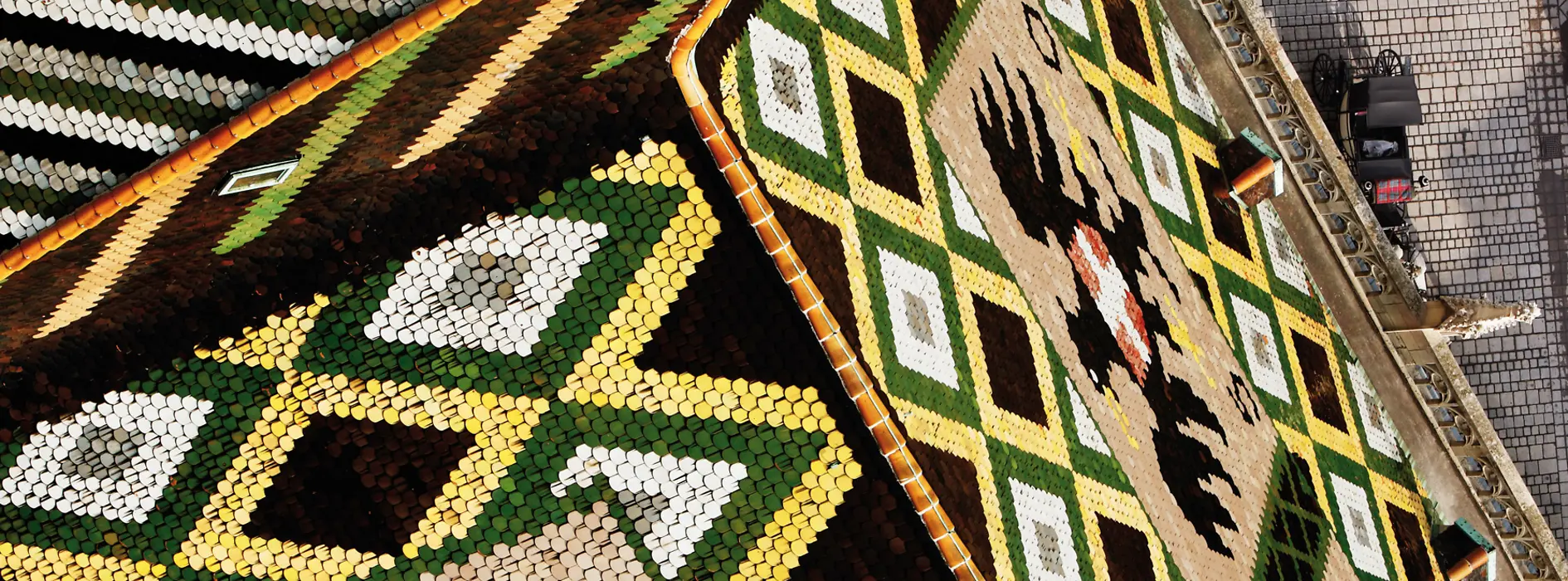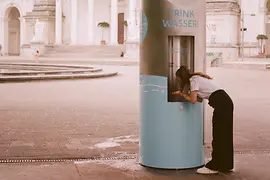Vienna Media News – March 2023 Viennese water: Fresh from the Source for 150 Years
For many Viennese, it’s the first thing they do when they return from a vacation abroad: grab a glass and savor the unique flavor of the city’s drinking water. In many countries, the water that comes out of the taps is not safe to drink. And even where it is ok to do so, it very quickly becomes clear that not all water is the same. What it tastes like depends on its origin and history. How the water permeates the rock, which strata it flows through – these factors influence the composition of the minerals in the water and have a major bearing on taste and appearance.
Spring Fresh – the Water Sommelier’s Verdict
And that is exactly what makes Viennese water so special. “Immediately upon pouring, Viennese water presents itself fresh from the tap with characteristic clarity and a wonderful silver sheen on the surface," says certified water sommelier Long Luna Lin-Maurer, summing up its distinct appearance. The Shanghai-born water expert and tourist guide has lived in Vienna for many years and can’t help but wax lyrical about the taste of Viennese water: "The velvety-smooth consistency of this spring water announces itself right from the first contact with the tip of the tongue. A sweetish note follows as it runs along the tongue. In terms of its finish, an almost imperceptibly tart note lingers."
Visionary Thinking in 1873
Viennese water originates from the Lower Austrian-Styrian Alps. Larger than Vienna, the area where the springs are located is subject to strict protection orders. The water flows directly to the capital via a pair of Mountain Spring Pipelines. The First Vienna Mountain Spring Pipeline was inaugurated in 1873 – the year of the Vienna World's Fair – with the aim of eradicating epidemics and outbreaks of diseases such as cholera by giving the population access to safe, fresh drinking water. Still an essential part of Vienna's water supply system to this day, the pipeline confirms how innovative and forward-looking the city planners of the time were.
While sustainability was not a familiar concept to people in 1873, the First Vienna Mountain Spring Pipeline was a classic example of it in action. The water flows all the way to the capital using the gradient alone, without a single mechanical pump needed. Today, the farthest spring is located 150 kilometers from Vienna. And within 24 hours, the crystal-clear, fresh water finds its way to the city via the First Vienna Mountain Spring Pipeline. In all, 220 million liters of spring water travel through it each day, bound for the city. Or for Wasserspeicher Rosenhügel, to be precise – the reservoir that the First Vienna Mountain Spring Pipeline empties into. From the outside, only the historic entrance portal is visible. The cisterns with their beautiful vaulted ceilings are hidden underground. Water samples are taken here several times a day to ensure quality standards are met.
Aquatectural Marvel
On its way to Vienna, the water passes through a total of 30 striking, heritage-listed aqueducts as it travels along the First Vienna Mountain Spring Pipeline. Wasseturm Favoriten, a water tower in the tenth district is an impressive monument to industrial historicism. Built in 1898/99, it played a key part of the water infrastructure that supplied the tenth and 12th districts of Vienna until it was rendered obsolete by the construction of the Second Vienna Mountain Spring Pipeline. In operation since 1910, this ancillary supply line brings spring water from the Styrian Hochschwab region to Vienna. Due to the slightly longer distance it has to cover, water takes up to 36 hours to reach the city via this route.
Together, the pipelines power a total of 16 hydro plants, generating enough electricity along the way to meet the needs of a town with a population of 40,000 such as Wiener Neustadt. What sounds visionary today encountered fierce resistance at the time. For many people, the sheer costs of transporting water to Vienna all the way from the Alps were difficult to swallow, particularly given the proximity of the Danube.
But on October 24, 1873, Emperor Franz Joseph officially inaugurated the First Vienna Mountain Spring Pipeline when he switched on the Hochstrahlbrunnen (High-Jet Fountain – ed.) on Schwarzenbergplatz. Still an impressive feature of this prominent city center location today, this high-pressure fountain symbolizes Vienna's liberation from epidemics and water shortages. For the geologist Eduard Suess, who was responsible for the construction of the First Vienna Mountain Spring Pipeline, the fountain was the crowning glory in a Gesamtkunstwerk, or total work of art. On World Water Day on March 22, the fountain’s reservoir is refilled with Alpine spring water after the winter break. The ensemble is known for its mini fountains, all of which have a meaning. The 365 small fountains at the edge of the pool, for example, represent the days of the year. In 1906, the feature was illuminated and it has been lit up in a wide variety of colors in the evenings ever since.
150 Years of Viennese Water
The pride that the City of Vienna has in its fresh spring water is reflected in the number of drinking fountains in the capital. People can fill up their water bottle at any time at any one of the more than 1,300 fountains here. By the fall of 2023, a new building will be constructed in Vienna's tenth district to mark 150 years since Vienna’s new water supply came onstream.
Incidentally, the City of Vienna is the only one in the world to have put constitutional safeguards in place to protect its spring water for future generations: "An extremely harmonious, easy-to-drink spring water that is the perfect companion for everything – with balanced mineralization and zero additives," says water sommelier Lin-Maurer.
For further information on the 150 Years of Vienna World’s Fair visit www.vienna.info/vision
Contact
Helena Steinhart
Media Relations
+43 1 211 14-364
helena.steinhart@vienna.info






